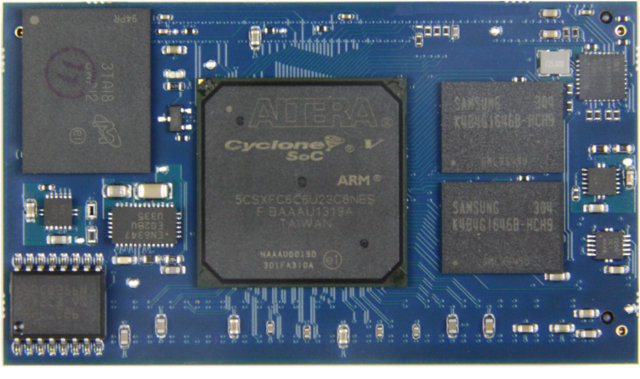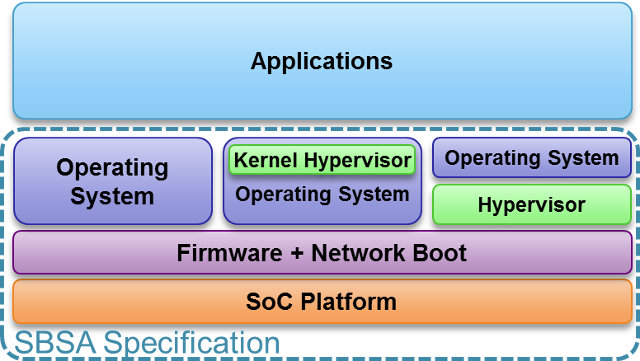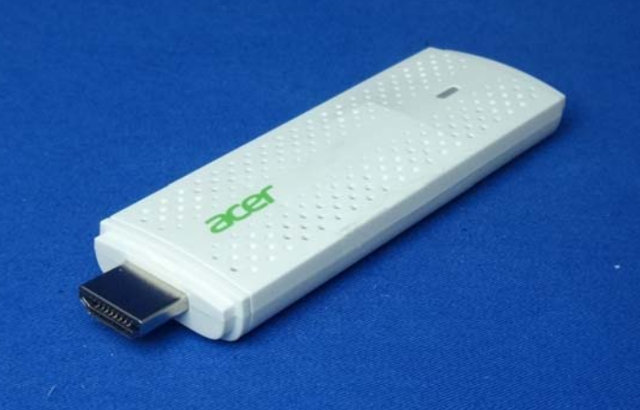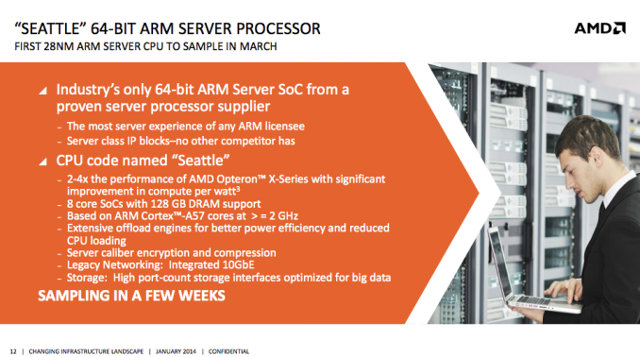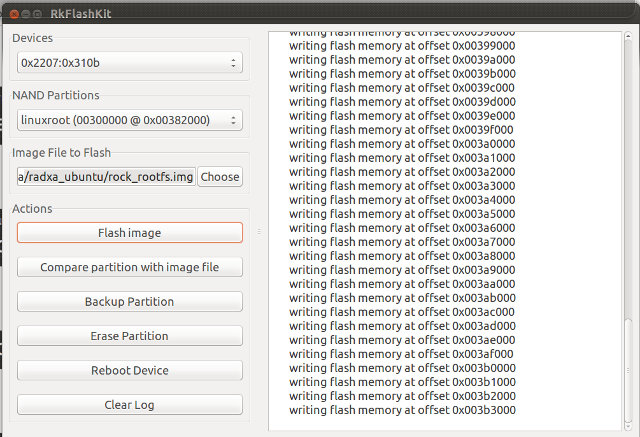There’s been some news at the end of this week that may not warrant a full article, but are still fun and/or interesting nonetheless: comments by the lead developer of Fedora ARM led to “Cute Embedded Nonsense” meme on Google+, preliminary commit for open source drivers for Tegra K1’s GPU, and Android Open Source Project defaults to ART instead of Dalvik. If you have a Google+ account, and circled a few people involved in ARM Linux, you must have seen a few postings about “Cute Embedded Nonsense Hacks” in your feed. It all started when Jon Masters posted about Red Hat’s ARM SBSA platform requirements, and in particular one comment that reads: I am all for people installing their own kernels if they want to. I support aggressively defined standard platforms (not cute embedded nonsense hacks) but not locked platforms. You can keep both parts when it breaks, of course. […]
DENX MCV Systems-on-Module Feature Altera Cyclone V SX FPGA + ARM SoC
DENX Computer has announced a new systems-on-module (SoM) powered by Altera Cyclone V dual ARM Cortex A9 + FPGA SoCs. DENX MCV SoMs also feature 1GB DDR3, 256 NAND Flash, and various memory interfaces and peripherals including PCI Express Gen2 and high-speed serial 3.125Gb transceivers. DENX MCV SoM specifications: SoC – Altera Cyclone V SoC with FPGA and two ARM Cortex A9 core @ 800 MHz. Four SoC are available: A2 – 5CSXFC2C6U23C7N – 25KLE, 36 DSP blocks, 6 transceivers 3.125Gbit/s A4 – 5CSXFC4C6U23C7N – 40KLE, 58 DSP blocks, 6 transceivers 3.125Gbit/s A5 – 5CSXFC5C6U23C7N – 85KLE, 87 DSP blocks, 6 transceivers 3.125Gbit/s A6 : 5CSXFC6C6U23C7N – 110KLE, 112 DSP blocks, 6 transceivers 3.125Gbit/s System memory – 1 GB DDR3 Storage – 256 MB NAND Flash, 256 Mbit Configuration Device HPS (Hard processor system) peripherals Clock distribution Default configuration: Gigabit Ethernet UART, SPI, I²C CAN USB Additional optional interfaces: One […]
ARM Unveils Server Base System Architecture Specification (SBSA) to Standardize ARM based Servers
64-bit ARM based servers should hit the market later this year or earlier in 2015 with SoCs such as Applied Micro X-Gene or AMD Opteron A1100. ARM still has the lead in terms of efficiency with a lower dollar per watt ratio, but Intel is closing in with their new Avoton server-on-chips. However, there’s one aspect where Intel is clearly in the lead: standardization and compatibility. ARM is very flexible, and allow SoC designers to create more or less what they want, but it comes at the cost that most ARM based systems are not capable of running mainline Linux, and instead use vendor trees. With many applications, that may not be critical, but when it comes to data-centers, companies want to be able to run the latest Linux version with the latest security patches as soon as possible, and want to lower the total cost of ownership (TCO), so […]
Linaro 14.01 Release with Linux Kernel 3.13 and Android 4.4.2
The first release of the year, Linaro 14.01, is now out with Linux Kernel 3.13 (baseline), Linux Kernel 3.10.28 (LSK), Android 4.4.2, and Ubuntu Linaro 14.01. The most important part of this release is support for Arndale Octa, which makes big.LITTLE processing code available to a low cost platform. Android 4.4.x is now on par with Android 4.3 in terms of support. Linaro has also decided to provide quarterly stable released with GCC, and Linaro GCC 4.7-2014.01 is the first quarterly stable release with the next one planned with Linaro 14.04. Here are the highlights of this release: Linaro Stable Kernel (LSK) 3.10.28-2014.01 with latest version of GTS patch set for big.LITTLE, and Android support Linux Linaro 3.13-2014.01: gator version 5.17 updated linaro-android-3.13-merge topic by John Stultz, the “Revert “PM / Sleep: Require CAP_BLOCK_SUSPEND to use wake_lock/wake_unlock” patch included uprobes v4 updated big-LITTLE-pmu topic from ARM Landing Team (LT) updated […]
Acer AerialCast Miracast Adapter Powered by Realtek RTD1185PA + RTL8192DV
Details about Acer AerialCast, a Miracast dongle have recently showed up on the FCC website. The device is an upcoming Miracast adapter features RTD1185PA media SoC and RTL8192DV Wi-Fi module, which specifications very similar to what is found in AX-01 Miracast/DLNA adapter. The specifications have not been listed, but can be derived from FCC documents and pictures: SoC – Realtech RTD1185PA MIPS24Kc processor @ 500MHz System Memory – 128 MB DDR3 SDRAM – (Etrontech EM6GC16EWXA) Storage – 128 MB NAND Flash – ESMT F59L1G81A Video Codecs – H.264, VC1, RM/RMVB, AVS Decoder USB – 1x micro USB for power WiFi – 802.11 b/g/n via Realtek RTL8192DV module Video Output – HDMI Misc – 1x LED Power Supply – 5V/1A. The device sent to the FCC came with a 5V/1A power adapter, a micro USB cable, an HDMI cable, and a technical documentation. The device will be sold under the name […]
AMD Opteron A1100 Server SoCs Feature 4 to 8 ARM Cortex A57 Cores
A few months ago, AMD published a roadmap showing AMD “Seattle” Server CPUs based on ARMv8 64-bit architecture were planned for H2 Q2014. The company has now announced the first series of processors that will be based on ARM Cortex A57: AMD Opteron A1100 Series, as well as the corresponding development platform at the Open Compute Project Summit in San Jose, California. Key features of AMD Opteron A1100 Series processors: 4 or 8 core ARM Corte-A57 processors Up to 4 MB of shared L2 and 8 MB of shared L3 cache Configurable dual DDR3 or DDR4 memory channels with ECC at up to 1866 MT/second Up to 4 SODIMM, UDIMM or RDIMMs 8x lanes of PCI-Express Gen 3 I/O 8x Serial ATA 3 ports 2x 10 Gigabit Ethernet ports ARM TrustZone technology for enhanced security Crypto and data compression co-processors On the software side, the company mentionned it is a […]
How to Install XBMC on D-Link Boxee Box
D-Link Boxee Box is a Linux based media player powered by Intel Atom CE4100 processor that became available in 2010, and features a dual sided RF remote / QWERTY keyboard that probably inspired many of the air mouse that are available today. The box features many of the ports and connectors that are available on most Android STB today, namely an HDMI port, an optical S/PDIF) out, a stereo analog audio out, Ethernet and 802.11n Wi-Fi, two USB ports, and an SD card slot. Many people however got disappointed with the firmware at launch time, and even if subsequent firmware updates have improved the user experience, some people have considered it was worth the effort to port XBMC to the device. Myles McNamara wrote the instructions to install XBMC on D-Link Boxee Box. I’ll summarize the steps below, and it appears to be relatively easy. Installing Boxee+Hacks to gain root […]
Getting Started with Raxda Rock – How to Generate and Flash Ubuntu Saucy Server and Desktop Images
I’ve already written a guide showing how to build and install Android in Radxa Rock. Today I’m going to build the Linux kernel, generate a Ubuntu server images based latest Ubuntu Linaro server release, flash the image to the NAND flash, and show how to install LXDE or XFCE desktop environment. If you are just interested in installing one of the latest supported images, you can download Android, dual boot (Android/Ubuntu), Ubuntu ALIP, and Router images for Radxa Rock @ http://dl.radxa.com/rock/images/, and skip “build” and “generate” instructions, and just follow the flashing instructions below. All steps in this tutorial will be done in Ubuntu 13.10, and lots of the instructions below follow hwswbits blog and Ubuntu Radxa Wiki. Build the Linux kernel Let’s start by building the Linux kernel. I’m assuming you’ve already install development tools in Ubuntu (e.g. apt-get install build-essentials). You can refer to the list at the beginning […]


